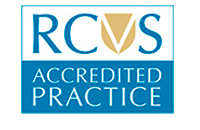24 hour contact: 01707 666297
New study shows majority of injuries in thoroughbred flat racing are minor
Findings from a recent study show that 70 percent of injuries recorded among thoroughbred flat racing horses on race-day were minor and not career-ending.
Using 14 years’ of data, the study found that soft tissue injuries, respiratory conditions and gait abnormalities were the most commonly reported issues. Soft tissue injures include wounds and lacerations. Those classified as “gait observations” primarily relate to horses reported as lame, moving poorly or being stiff, but without a specific cause being identified. The majority of horses with respiratory conditions had epistaxis, the term for blood at the nostrils.
Researchers recently completed the first large scale study of race-day veterinary reports recorded for thoroughbred flat racing horses in Great Britain and the findings can help prioritize efforts and direct research to identify risk factors for the most common and/or severe conditions, with the aim of reducing their occurrence through appropriate interventions.
Now that the most important race-day veterinary incidents have been identified, researchers can begin to determine what risk factors and strategies can be used to build on British racing’s already strong track record of equine welfare and further reduce injury and fatality rates in British flat racing.
Sarah Rosanowski, PhD PGDipVCS BSc, at the Royal Veterinary College said: “It was not surprising to find that most veterinary incidents reported on race-day are relatively minor and not career-ending. This is of course a good thing.
“Although the good news is that the majority of injuries are not life-threatening, the fatality rates in British flat racing have remained relatively stable rather than declining over the past decade.
“The ongoing surveillance by the British Horseracing Authority is important as it provides a way to track the occurrence of veterinary events over time. Now that we have a baseline against which to monitor the effects of future interventions, there will be opportunities to further improve horse welfare and racing safety.”
Research reference
Rosanowski, S. M., Chang, Y. M., Stirk, A. J. and Verheyen, K. L. P. (2016), Descriptive epidemiology of veterinary events in flat racing Thoroughbreds in Great Britain (2000 to 2013). Equine Vet J. doi:10.1111/evj.12592

For more information on horse welfare in British racing see www.thehorsecomesfirst.com
Press Office Contact
Uche Graves / Zoe White
T: 0800 368 9520
E: uche.graves@plmr.co.uk / zoe.white@plmr.co.uk
Notes to Editors
The Royal Veterinary College (RVC) is the UK's largest and longest established independent veterinary school and is a constituent College of the University of London. The RVC offers undergraduate, postgraduate and CPD programmes in veterinary medicine, veterinary nursing and biological sciences, being ranked in the top 10 universities nationally for biosciences degrees. It is currently the only veterinary school in the world to hold full accreditation from AVMA, EAEVE, RCVS and AVBC.
A research-led institution, in the most recent Research Excellence Framework (REF2014) the RVC maintained its position as the top HEFCE funded veterinary focused research institution.
The RVC also provides animal owners and the veterinary profession with access to expert veterinary care and advice through its teaching hospitals; the Beaumont Sainsbury Animal Hospital in central London, the Queen Mother Hospital for Animals (Europe's largest small animal referral centre), the Equine Referral Hospital, and the Farm Animal Clinical Centre located at the Hertfordshire campus.
RVC Press Release 25 October 2016
See other Press Releases.

